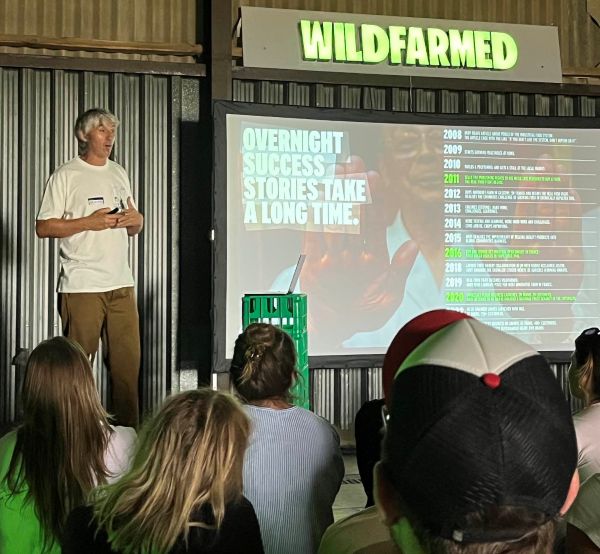
What is regenerative farming?
A regen-ag perspective from Innovation Zero
Following Helen’s blog on nature and the economy at Innovation Zero, here’s her perspective on reimagining regenerative agriculture.
‘Whole systems, whole farms: Regenerative agriculture reimagined’ laid out the tension between ambition and practicality, and the urgent need to get the messaging right if regenerative agriculture is to move beyond the fringes into the mainstream.
Regenerative agriculture isn’t the outcome, it’s the how
We often hear farmers ask what regenerative agriculture delivers. But maybe we need to start positioning it differently. As one speaker put it, regen is the how, not the outcome. It’s the method by which farming systems can rebuild natural capital, protect food production, and stay resilient in a volatile climate.
At its core, the session moderator, Richard Pywell, stated that he considers regenerative agriculture to be grounded in four core principles:
- Minimising soil disruption
- Enhancing biodiversity
- Integrating livestock
- Minimising artificial inputs
These aren’t abstract ideals, they’re practical steps to restore ecosystems while keeping farms productive. But making them work at scale means navigating fear, complexity, and risk.
Fear, risk and the unknown
But the shift isn’t easy. There’s a fear of the unknown and a very real risk that getting it wrong could mean lost income or degraded land. We can’t overlook the fact that farmers are being asked to change systems without always having the full picture.
It was noted that we too often treat soil like a growing medium, not a complex, living ecosystem. This mindset limits how we manage risk and build resilience. And it’s tied to another issue raised repeatedly: ‘short-termism’. We urgently need more ‘long-termism’ in both farming and policy if regenerative practices are to scale.
Organic farming already has the niche
Organic food has carved out a space in the market, making up 4% of UK food sales. If regenerative agriculture becomes another label, we’ll miss the chance to drive and scale mainstream transformation.
For regen to scale, we need:
- A level playing field
- Supportive policy frameworks
- And a supply chain willing to shoulder the cost, not pass it to consumers
We can’t expect households already stretched to choose higher-cost, regeneratively produced food out of principle alone. Policy and procurement must step up.
Regen = resilience = a better story
One of the most compelling takeaways? Regenerative farming builds natural resilience. It’s a forward-looking strategy that tackles environmental and economic risk. But the way we talk about it matters.
We need clear, confident communication and messaging that acknowledges complexity but doesn’t get lost in it.
Regen also gives us the chance to tell a better food story. One that connects nutrition and nature. Because there’s a difference between being full and being fed. Regen reframes food as nourishment for both people and planet.
Farmers at the centre. Policy at the table
The final takeaway? Put farmers at the centre. Don’t treat them as the end point of policy, treat them as co-creators of the solution.
But also, let’s be clear, the system must work for consumers. That’s where smart policy comes in. Regen will only scale if we make it fair, feasible, and clearly communicated.
We’re just at the start of this journey. There’s a lot to define. But there’s also real potential and it’s exciting.
If you haven’t already, you can read Helen's first blog from Innovation Zero, which explores how nature underpins economic growth and how we build confidence in restoring it.
At Pinstone, we’re passionate about helping organisations in food, farming, and the environment tell the right stories, craft messages that resonate, and communicate progress transparently, please get in touch if we can help your organisation.
More recent insights

Why hire a PR agency when you could employ someone?

Open Farm Sunday – bringing comms strategy to life

Regenerative farming, outcomes, and the power of brand

Sign up to our newsletter
Keep your finger on the pulse.
